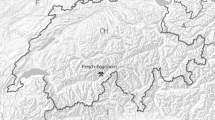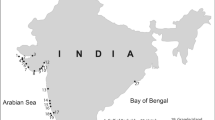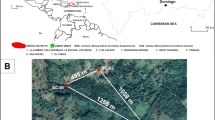Abstract
CHARNOCKITIC rocks have been developed over a wide area in the southern part of the State of Mysore in India. The typical charnockites are found in isolated patches of varying dimensions. The largest of these occurrences is in the Biligirirangan Hills, where a fairly continuous mass of charnockite extending more than 25 miles forms this mountainous tract which lies between 11° 40′ and 12° N. In this region peaks of more than 5,000 ft. are common on the ranges, which generally trend in a north to south direction.
This is a preview of subscription content, access via your institution
Access options
Subscribe to this journal
Receive 51 print issues and online access
$199.00 per year
only $3.90 per issue
Buy this article
- Purchase on Springer Link
- Instant access to full article PDF
Prices may be subject to local taxes which are calculated during checkout
Similar content being viewed by others
References
Shand, S. J., Quart. J. Geol. Soc., 72, 212 (1917).
Holland, T. H., Mem. Geol. Surv. Ind., 28, 199 (1900).
Author information
Authors and Affiliations
Rights and permissions
About this article
Cite this article
PICHAMUTHU, C. Trap-Shotten Rock from the Biligirirangan Hills, Mysore State, India. Nature 183, 483–484 (1959). https://doi.org/10.1038/183483b0
Issue Date:
DOI: https://doi.org/10.1038/183483b0
Comments
By submitting a comment you agree to abide by our Terms and Community Guidelines. If you find something abusive or that does not comply with our terms or guidelines please flag it as inappropriate.



